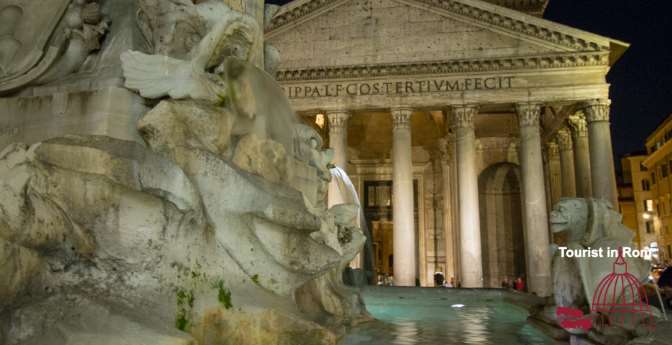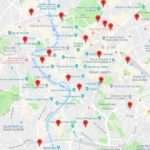Rome has excellent drinking water and there are many public water fountains. The water supply in Rome is still based on the work of the ancient Romans.
Water quality
The tap water in Rome is generally a very fresh, tasty and chalky potable water of excellent quality. Tap water is under continuous quality control and slightly chlorinated. In some suburbs of Rome, the water is slightly sparkling and is slightly effervescent from the pipe. You can safely drink tap water in Rome.
Nasoni
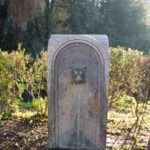
In many streets and parks in Rome, you will find fountains with fresh running water. They are called “Fontanelle” or even “Nasoni“.
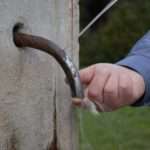
The water is always potable water, otherwise you’ll find a note, that the water is “acqua non potabile”. All wells are checked regularly.
The Fontanelle have usually a hole on the top of the spout. If you close the spout with your finger, the water splashes out of the hole and you can have the water sprayed directly into the mouth. It is forbidden to touch the spout with your mouth!
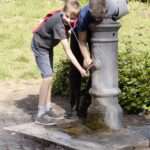
You can safely fill a water bottle at the bubbler and it is absolutely not necessary to buy bottled water.
In St. Peter’s Square you will find drinking water wells around the obelisk at the lampposts.
Sparkling water
The Roman waterworks have several water stations in the city where you can get chilled drinking water with and without gas. They are called “Casa dell’Acqua” – House of Water. The declared aim is to reduce the consumption of plastic bottles. There are water stations not only in the city center, but also in many neighborhoods. Cell phones can also be charged at the stations.
The following water stations are particularly interesting for tourists:
Water Stations at the Colosseum
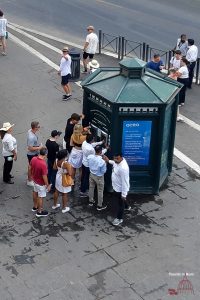
- Station in front of the Colosseum Metro Station
- Station at the Arch of Constantine
- Station opposite the exit of the Colosseum
Water Stations near the Vatican
- Cipro Metro Station
- Ottaviano Metro Station
- Piazza Risorgimento (to be installed by the end of 2024)
Other Water Stations
- Basilica Santa Maria Maggiore: Piazza di Santa Maria Maggiore
- Castel Sant’Angelo
- Bahnhof Termini
- Bahnhof TiburtinaTrastevere: Piazza Giuseppe Gioacchino Belli
- Testaccio: Piazza di S Maria Liberatrice
- Basilica di San Giovanni: Piazza di Porta san Giovanni
- Basilica di Santa Corce in Gerusalemme: Piazza Santa Croce in Gerusalemme
- Basilica di San Paolo fuori le mura: Viale San Paolo
- Basilica di San Lorenzo: Piazzale del Verano
The Rome Public Utility Company App
ACEA, Rome’s public utility company, has developed an app that allows you to find all the water points and water stations. The app can be downloaded from the Waidy Wow site.
Monumental fountains
Since ancient times, the Romans have placed great value on a good water supply. Since the fourth century BC the waters of the Tiber was no more sufficient for the provision of water, they began to build aqueducts and brought them to a high architecture.
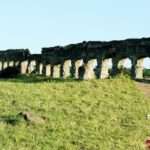
In ancient times, 12 aqueducts were realized, conducting the water over long distances. Today, there are 16 water supplies to the city. Many of the fountains, such as the Trevi Fountain, the large fountain Acqua Paola on the Gianicolo Hill or the two fountains on the St. Peter’s Square, are fed by ancient aqueducts with potable water.
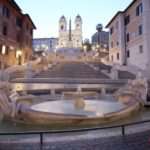
To save water, many monumental fountains today have circulation systems. The drinking from the monumental fountains is therefore usually harmless, but not recommended. It is forbidden to jump into the Roman wells or even to put your feet in it.
Water 2025
There is always talk of water shortages in Italy. However, Rome has not usually been affected, as the surrounding area is very rich in water. Only in the summer of 2017 did the level of the Lago di Bracciano in the north drop alarmingly and water-saving measures had to be introduced.
In the winter of 24/25 there was sufficient rainfall and it rained regularly in the spring. It is not unusual for there to be little rain from June to mid-August, and drought is also normal during these months. Therefore, no restrictions are expected. The free drinking fountains will certainly be in operation.
Water shortages in the past
Rome usually has potable water in excess and is very wasteful. Thousands of liters flow through the monumental wells and the 2,500 public bubblers in the city.
Due to the low rainfall in the spring 2017 the inflows of potable water in Rome were below the usual amounts.
At the beginning of July 2017 it was decided to close a large part of the bubblers – Nasoni – in addition to a ban on the irrigation of green areas. With the onset of rainfall in September, the problem has been solved.
With a population of 2.7 million, Rome has double the water consumption of Berlin with 3.5 million inhabitants and the reduction of 8% had no major impact.
As a signal of responsibility for the environment, the Vatican turned off the two monumental fountains on St. Peter’s Square. That was a pity, of course.
The Roman water supply company has published a list of Nasoni with guaranteed water supply. In order to make your orientation easier, we have drawn the guaranteed bubblers in the city center into the map below.
Map of guaranteed fountains (Nasoni) in Rome center
In any case, it has been shown that the news of water scarcity in the summer of 2017 has been greatly exaggerated and that for now, Rome will not have water problems too soon.
